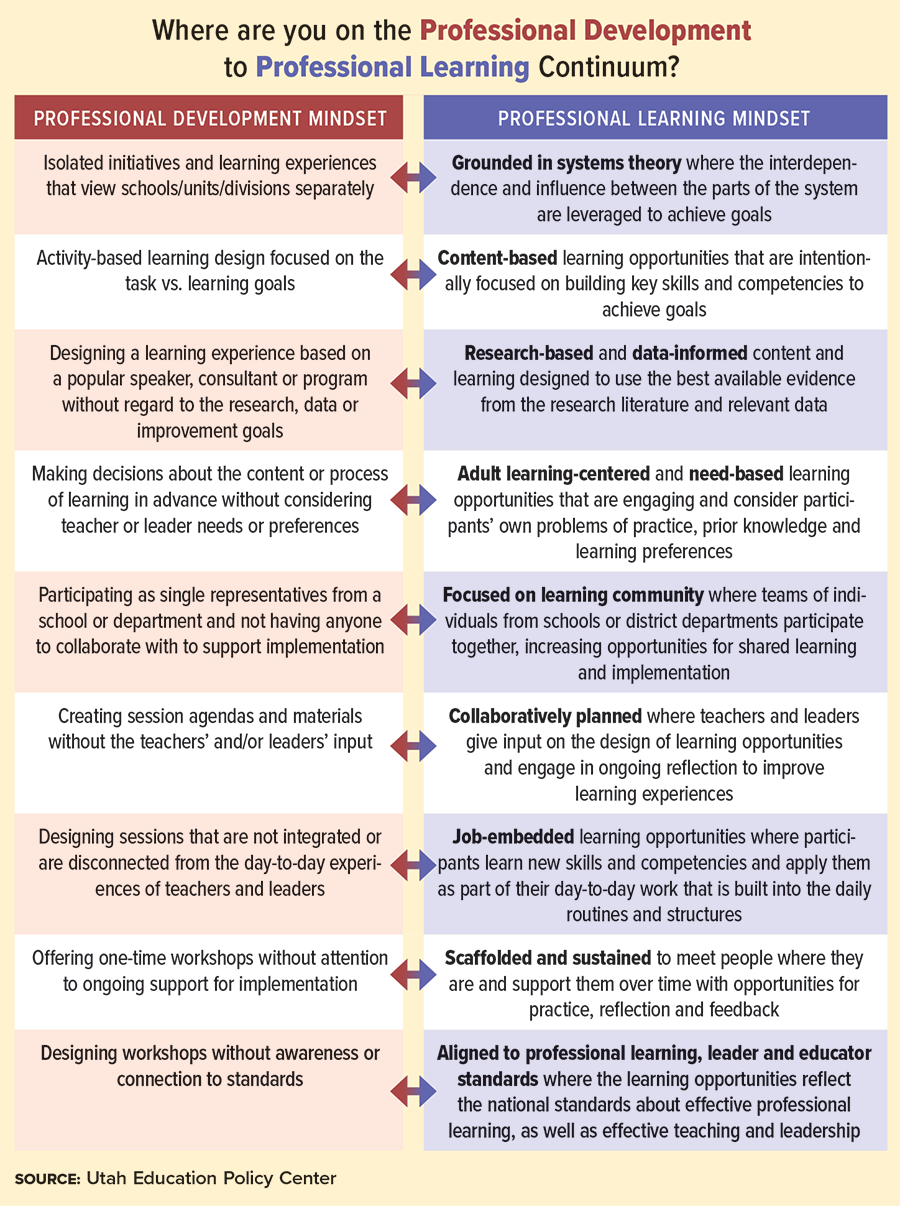From a Professional Development to a Professional Learning Mindset
June 01, 2024
The Utah-based authors support districts moving from one-time training events to intentionally designed targeted programs
It is spring, and the school district’s leadership seeks ideas about professional development topics for the staff’s Back-to-School days in mid-August from department directors and principals.
The district leadership team considers several popular consultants who might deliver a message that creates excitement and momentum for the year. Eager to nail down logistics, leadership contracts keynote speakers and session presenters.
District leadership views the upcoming program as meeting educators’ needs through a mixture of inspirational and more practical workshops. This approach is seen as tailored and differentiated so that educators and building leaders can gain new skills and have choices.
But, with financial resources more constrained lately, department heads and principals ask, “What has changed or improved due to the considerable investment in time and resources we put into these PD sessions?”
This Content is Exclusive to Members
AASA Member? Login to Access the Full Resource
Not a Member? Join Now | Learn More About Membership
Using a Continuum for Self-Assessment and Clarit
 As districts and schools move from a professional development to a professional learning mindset, the continuum developed by the Utah Education Policy Center can serve as a reflection guide.
As districts and schools move from a professional development to a professional learning mindset, the continuum developed by the Utah Education Policy Center can serve as a reflection guide.
The continuum highlights examples of how to lead a professional learning system where teams ground decisions in the why and continually see opportunities to create coherence and alignment within and across their learning system.
Educators at the district and school levels can use the continuum as a framework for self-assessment to seek greater clarity around purpose and outcomes for professional learning and to create routines and habits that support organizational learning and improvement.
The continuum also can help teams to better understand how their professional learning system is part of a broader talent development system.
Advertisement
Advertisement
Advertisement
Advertisement



